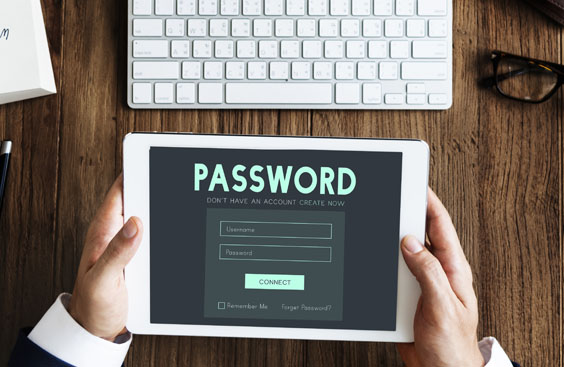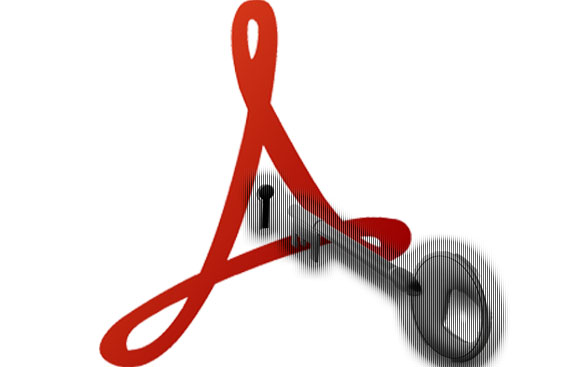Unlocking PDFs: How to Remove Passwords

Unlocking PDFs is an operation that is performed much more frequently than you think.
You too have probably had to use PDF documents that are locked by passwords or specific restrictions.
These restrictions are generally
inserted to prevent someone other than the owner of the PDF from making changes or even printing the document.
We at Made are here today to help you better understand how to Unlock PDFs by removing any passwords or restrictions in a few simple steps.
Unlocking PDFs: Types of Passwords
Before explaining to you what you need to do to Unlock PDFs, it is essential to identify what type of protection has been set on the document in question.
PDFs, in general, can be protected using 2 different types of passwords:
1. The owner password that denies you the possibility of both printing and editing the PDF;
2. The user password, which instead prevents you from opening the document, thus prohibiting you from even simply viewing it.
Although they may seem similar at first glance, they actually have a completely different level of vulnerability.
Owner passwords are usually simpler to delete, while user passwords are more complicated to cancel.
The latter can only be circumvented by brute forcing, i.e. by trying every possible combination of characters until the right one is found.
Consequently, understanding the difference between the two types of passwords will then allow you to choose the most suitable tool to Unlock PDFs you need.
After this short introduction, it is now time to list the various steps required to remove both types of passwords, using different tools, for each category of device.
Unlocking PDFs: Remove Passwords from PC and Mac
To be able to Unlock PDFs by removing passwords directly from your PC, whether it’s Windows or Mac, you’ll need to use some special programmes.
QPDF for Windows
The first one we recommend is QPDF, a completely free software available for Windows, macOS and Linux, which allows you to remove owner passwords from PDFs in a few simple steps.
Step 1: Go to the SourceForge page;

2 Step: In the search field, type QPDF and click on the green ‘download’ button;
3 Step: Once the download is complete, open the .zip document and extract its contents by saving it in a folder of your choice;
4 Step: Hold down the “shift” key on your keyboard and simultaneously right-click on the folder named “bin”;
5 Step: Now select “Open command window here” to open the Command Prompt window;
6 Step: Within this black screen, copy and paste this line: qpdf –decrypt input.pdf output.pdf ;
7 Step: Now drag the file containing QPDF to the command line and press the Enter key on your keyboard.
Once you have performed all these steps, you should find a new unlocked version of the PDF on your PC, inside the folder you have chosen for the output file.
QPDF for Mac
To install QPDF on macOS, you need the Homebrew package, which is free open source software.
From here you can then download QPDF, again by performing a few simple steps.
Step 1: Open the Terminal on your Mac by typing “Terminal” in the Search section, or you can also ask Siri directly;
Step 2: Here you will find a page with a black background and a few lines written in white; to install Homebrew you will have to enter this command: /bin/bash -c “$(curl -fsSL https://raw.githubusercontent.com/Homebrew/install/HEAD/install.sh)” copying it from here and pasting it into your Terminal and clicking the Enter key;
3 Step: Type in your user account password if you are asked for it;
4 Step: Copy the command: brew install qpdf and press Enter;
5 Step: Once the installation is complete, copy this line into the macOS Terminal: qpdf –decrypt input.pdf output.pdf ;
6 Step: Now substitute instead of input.pdf and output.pdf the 2 paths to the input and output files and press Enter.
In case you fail in this last operation, you can obtain the full path to the QPDF file by simply dragging it to the command line.
By doing this you will finally have obtained a new unlocked version of your PDF.

Unlocking PDFs with PDFCrack for Windows
Removing the password from a PDF document with a user password is a much more complex operation, but it is no harm to try.
In this case, the software we recommend is PDFCrack.
The latter is a completely free and open source software available for both Windows and macOS.
We will list everything you need to do in as much detail as possible so that you can perform each step correctly.
Step 1: Download PDFCrack by going to its website;
Step 2: Click on the “Download” button;
Step 3: Once you have finished downloading, open the .zip archive containing PDFCrack;
Step 4: Extract the contents of the zip folder by saving it in another folder on your PC as desired;
5 Step: Now hold down the “Shift” key on your keyboard and simultaneously right-click on the folder you have previously chosen to extract the zip file.
6 Step: Select “Open command window here” from the various options;
7 Step: Once you have arrived at the “Command Prompt”, copy and paste this command: pdfcrack file.pdf and press Enter ;
8 Step: Now instead of ( file.pdf ) you will have to enter the path and name of the PDF you want to unblock.
In case PDFCrack does not recognise your file then do this:
Step 1: Take the PDF file you want to unblock and copy and paste it into the folder where you extracted the PDFCrack zip file and type this line: pdfcrack file.pdf into the Command Prompt, then click Enter;
2 Step: Instead of (file.pdf ) just type the name of the PDF without the path;
At this point, if everything was done correctly, you should have found the file password and unlocked your PDF.
PDFCrack for macOS
If you have a Mac instead, then the steps you need to perform change slightly.
Step 1: Go to the SourceForge page;
Step 2: Click on the “Download Latest Version” button at the top;
Step 3: Open the tar.gz archive containing PDFCrack and extract its contents to another folder on your macOS.
4 Step: Open Terminal, either by asking Siri or by searching for the word Terminal in your Mac’s search;
5 Step: Copy the following commands into the Terminal: cd (path where you extracted PDFCrack) and make -f Makefile and then click Enter;
6 Step: Now open a new Terminal window and copy this command to search for the password of your locked PDF: ( path where you extracted PDFCrack)/pdfcrack -u (path and name of the PDF to be unlocked).
If PDFCrack manages to find the password you will be notified by a message saying: found user-password followed by the password found.
We have come to the end of this little guide written to help you unlock restricted PDFs.
However, it is very important for us to remind you that removing the password from PDF documents that are not your property can be a serious breach.
We at Made hope that we have been helpful, however, if you want to know more tips and little guides we recommend reading our Blog every Saturday.

